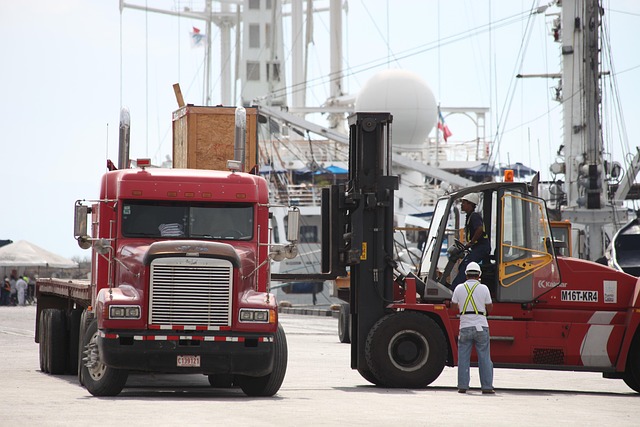Looking to register your car in California? This comprehensive guide walks you through the entire process, ensuring a smooth experience. From understanding key requirements to gathering essential documents and even the crucial step of VIN verification, we’ve got you covered. Learn how to navigate the DMV or explore alternative methods for online registration and mail-in options.
- Understand California Vehicle Registration Requirements
- Gather Necessary Documents for Car Registration
- Perform VIN Verification: Steps & Importance
- Visit the DMV: Registering Your Vehicle In-Person
- Alternative Methods: Online Registration and Mail-In Options
Understand California Vehicle Registration Requirements

Before registering your vehicle in California, it’s crucial to understand the state’s specific requirements. One key aspect is ensuring accurate and up-to-date information, starting with a valid Vehicle Identification Number (VIN) verification. This process is essential for both new and used car owners. In California, you’ll need to provide the VIN during registration, which serves as a unique identifier for your vehicle, helping to track ownership history and ensure compliance with state regulations.
Additionally, consider utilizing mobile VIN verification services, also known as mobile vin inspectors, to streamline the process. These services allow you to complete a vin inspection remotely, providing convenience and potentially saving time compared to traditional methods. With a simple online or app-based check, you can verify your vehicle’s history, ensuring it meets California’s registration criteria before finalizing the paperwork.
Gather Necessary Documents for Car Registration

Before you begin the registration process, make sure you have all the essential documents ready. One crucial piece of paper you’ll need is the Vehicle Identification Number (VIN) verification report. This can be obtained through a mobile VIN verifier or by conducting a simple vin inspection yourself. The process typically involves entering your vehicle’s unique VIN number into an online database to access detailed information about its history and condition.
Having this documentation on hand streamlines the registration process, ensuring a smooth transaction with the California Department of Motor Vehicles (DMV). It’s also important to gather other necessary papers like the title, proof of insurance, and your valid driver’s license. With these in order, you’re well-prepared to take the next steps in registering your vehicle.
Perform VIN Verification: Steps & Importance

Performing a Vehicle Identification Number (VIN) verification is a crucial step in the car registration process in California. This essential check ensures that the vehicle’s details match the information provided by the manufacturer, preventing fraud and ensuring safety standards. It involves cross-referencing the unique 17-character VIN with official records to confirm ownership, history, and any outstanding issues like recalls or salvage titles.
A mobile VIN inspection or using a reliable vin verifier can streamline this process. These services allow you to obtain accurate vehicle history reports quickly. By comparing the gathered data against state records, these mobile vin inspectors ensure that your car meets all legal requirements before registration, making the overall procedure more efficient and stress-free.
Visit the DMV: Registering Your Vehicle In-Person

To register your vehicle in California, one of the most efficient methods is to visit a local Department of Motor Vehicles (DMV) office. Bring all necessary documents, including proof of ownership, identification, and any previous registration records. A key step in this process involves conducting a vin verification, which ensures the vehicle’s identity and helps prevent fraud. This can be done by a mobile vin verifier for added convenience.
During your visit, you’ll need to complete application forms, pay the registration fees, and pass any required inspections. Staff at the DMV will guide you through the process, ensuring that all information is accurate and up-to-date. Remember to check their website beforehand to confirm the specific requirements and documents needed for a seamless vin inspection and registration experience.
Alternative Methods: Online Registration and Mail-In Options

In addition to registering your car at a California Department of Motor Vehicles (DMV) office, there are alternative methods available for a more convenient experience. One such option is online registration, where you can complete the process from the comfort of your home or on the go. This method streamlines the traditional in-person visit, saving you time and effort. Simply gather all necessary documents, including proof of insurance, ownership, and identity, and input your vehicle’s information into the DMV’s online portal. Another efficient approach is the mail-in option, where you can submit your registration forms and required documents to the DMV by mail. This method is ideal for those who prefer a paperless process or have limited mobility.
For added convenience, some services offer mobile vin verification and inspection, allowing you to register your car without visiting a DMV office or waiting in line. A mobile vin verifier can perform the necessary checks and ensure your vehicle’s details are accurate, providing a seamless and quick registration experience. This modern approach leverages technology to make an otherwise bureaucratic process more accessible and user-friendly.
Registering a car in California involves understanding state requirements, gathering essential documents, and completing crucial steps like VIN verification. By following these guidelines, whether registering in-person at the DMV or using alternative methods such as online registration or mail-in options, you can ensure your vehicle is legally registered and ready to hit the road. Remember, proper registration is not only a legal requirement but also a vital step in protecting your investment and maintaining a safe driving environment.
